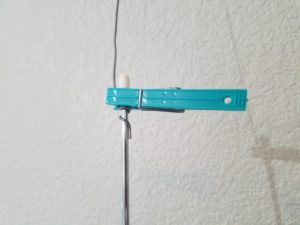Good Morning from my robotics lab. This is Shadow_8472, and today, I’m covering the installation of my new SSD (Solid State Drive). Let’s get started.
If you are watching the video version, you can see a time lapse of the upgrade in the background.
So, for the upgrade, I’m adding a 250 GB drive. To mount it, I have a plastic bracket and a SATA cable. After bringing the computer over, I fetch a bowl for holding screws. I unpackage my supplies and open up the case. I use a little canned air to clear some of the dust buildup. It takes me a moment to puzzle out the final orientation for the bracket, but when I get it, I start installing the SSD with the big screws from the bracket set. The drive does not accept them. I use the smaller ones instead.
I feed the SATA cable through the case and attach it to the motherboard. After taking the faceplate off to get a better look the first drive’s mounting, I remember the quick release system. I start attaching the remaining screws so I can slide the assembly into place. At least, that was the plan. The screws refuse to go in straight. There are three sets of holes to mount the bracket and all are too small for the bigger screws.
I spend a while battling the holes and drop the first screw in the case. I fish it out the first time, but the second time, I have to pick up the case and dump it. After trying one last time, I abandon the venture and locate a smaller set of tools.
Fortunately, I find some acceptable screws in the small screwdrivers’ case. One catch: of the six screws I find with the small screwdriver set, only three fit. I try out a few other possible screws from the garage, but none of them fit. I stop the camera for a few hours and go shopping for a fourth screw, but I don’t find any.
While I shop, I open myself to the possibility of mounting with only three screws. After all, three is all you need to hold it still if you aren’t planning on shaking the thing around on a regular basis. But as a last ditch effort, my father comes in and lets me modify a long screw that would otherwise have fit. I try marking the length, lopping it, and filing it down. The shortened screw’s new tip is too big. Resigning to my three screw plan, I stick the assembly in and close everything up.
After reconnecting my peripherals, I turn the system on and have a circus of a time trying to figure out if the operation was a success or not. Windows didn’t see the new drive, and I even reopened the case and adjusted the connections. Eventually, my father was indeed able to confirm that the system did see the drive, but Windows wasn’t acknowledging it for lack of formatting. I opted to leave it unformatted until next week when I do my research on installing Linux.
In closing: This was the first computer upgrade by myself for the most part. I was clumsy with my organization despite my attempts to make everything go smoothly, but it was a success anyway.
Final Question: What was the first computer upgrade you did without supervision?


 I eventually got tired of the static and tried to fix it. The sliders on the front helped, but not enough. Touching the antenna seemed stabilized the signal almost perfectly, but no one seemed interested in standing there with an arm on the thing.
I eventually got tired of the static and tried to fix it. The sliders on the front helped, but not enough. Touching the antenna seemed stabilized the signal almost perfectly, but no one seemed interested in standing there with an arm on the thing.